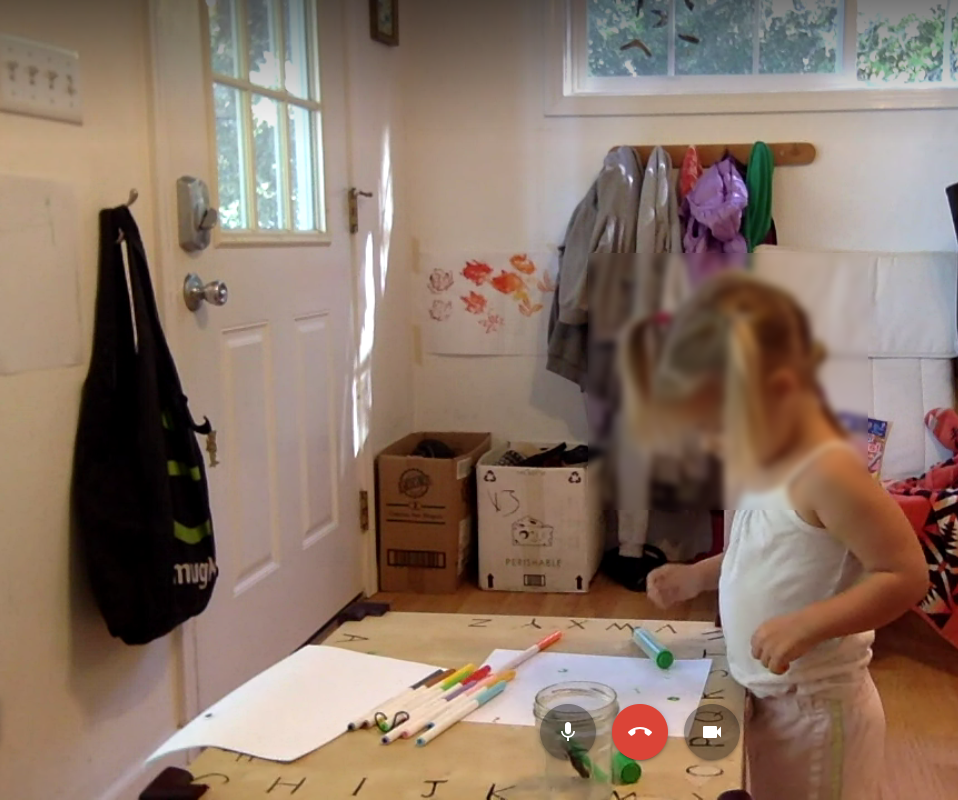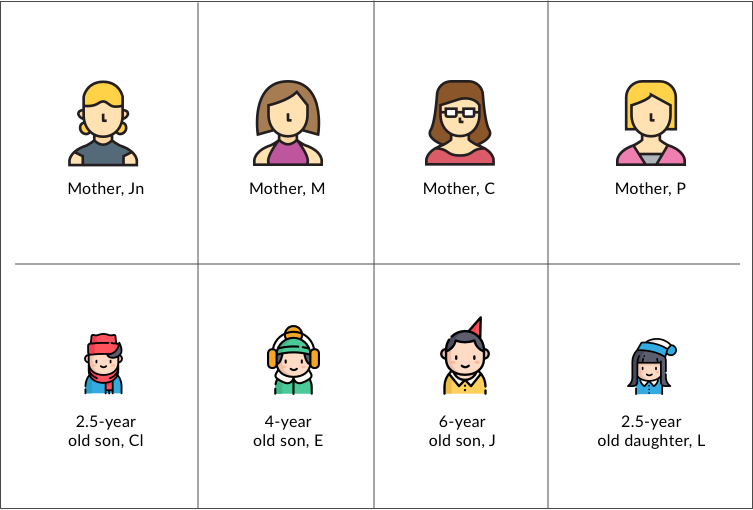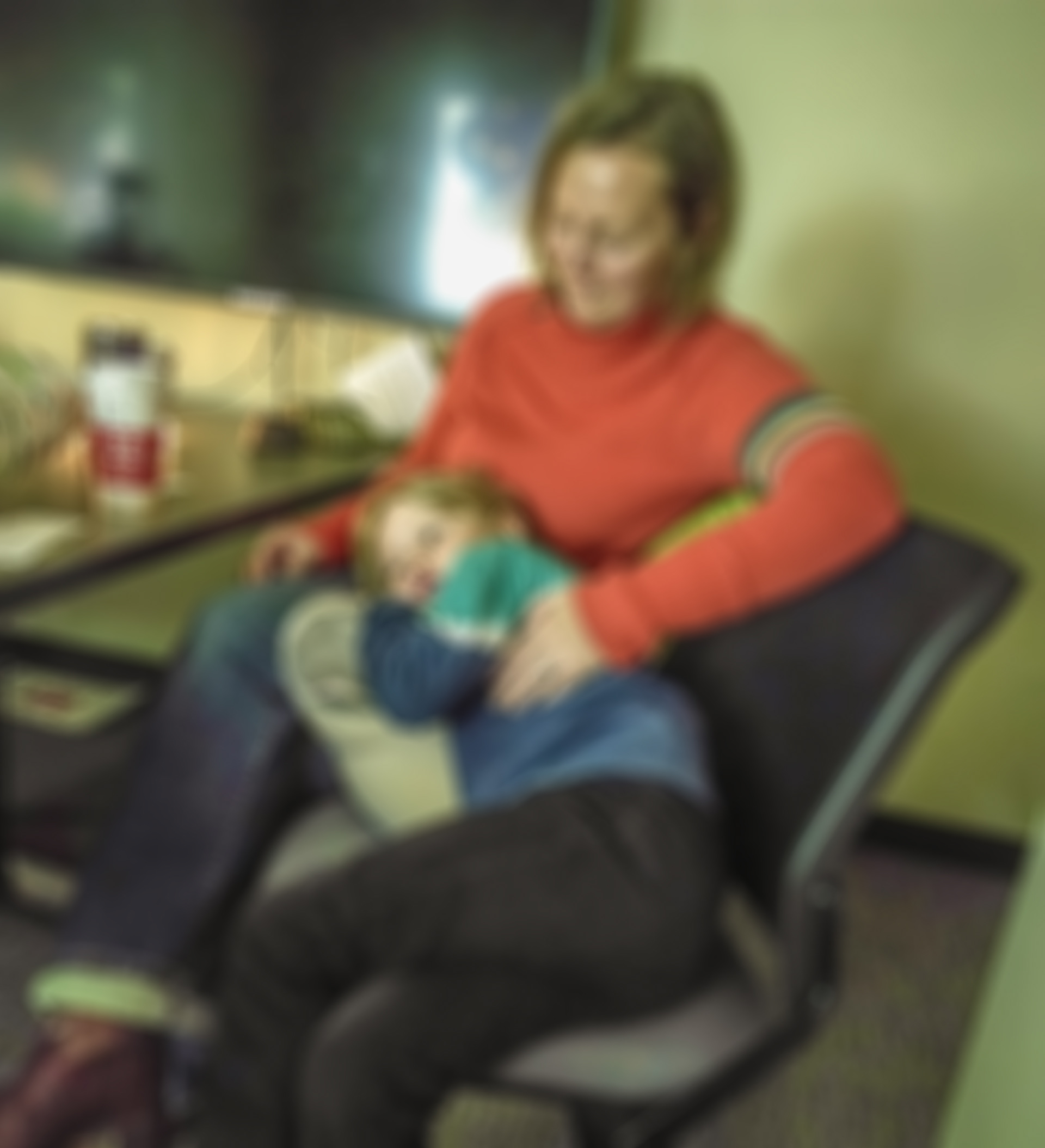Project Overview
My Role Project Type
Product Designer Team
UX Researcher
Audience Duration
Families with children aged from 2-8 2 weeks
Solution Overview
Mini Dreamer is a storytelling companion that enriches bedtime experiences. By controlling our product using voice, parents and children can enjoy stories in the comforts of their own bedroom environment. Mini Dreamer also eases children's transition to sleep and yield fully control to parents through the companion App.


Research & Design Process
Observation & Motivation
GETTING INSPIRATION FROM UNSTRUCTURED OBSERVATION
Observation 1: Kids want unlimited attention from parents, but parents have limited energy
Young kids have a hard time making sense of what is happening when their parents get busy and spend less time with them. There is a natural craving for approval and love from parents. However, working parents have little time to spend with their children and are often struggling to a balance.
Brainstorming 1: Record and express emotion no matter when and where
Family Moments is a e-book for children to look at the greetings, photos, video clips and drawings coming from his/her family members. In this way, they get a sense of being loved and accompanied even being apart from certain family members.



Observation 2: Parents’ concerns regarding digital screens
It is easier to give children a mobile device to play with, rather than devoting efforts and time in narrating a story to their children. Although current technology is advanced enough to satisfy kids’ entertainment or education needs, parents are concerned about children's health, attention spans, and etc.
Brainstorming 2: A digital storytelling toy without screen
Our detachable toy provides different assets for parents or kids to assemble. Different permutations will result in different stories.
Research
UNDERSTANDING FAMILY TIME THROUGH EXPERIENCE SAMPLING
We aimed to get answer for the following questions by the end of the experience sampling:
Step 1: Design and conduct study to understand family moments in an unobtrusive way
We designed a study that was a mix of diary study, cultural probe, and in-depth interviews. Cultural probes and diary studies are meant to understand users' intimate family time without the intrusion from us. In this study, 8 respondents participated in a continuous 5-day study covering 3 weekdays and 2 weekend days.
Recruiting Participants
We ended up conducting our study with four parent-child pairs. Our recruitment ensured participants' diversity in terms of gender and age.
Design Kit & Handbook
Design Kit includes: Sketch book, Pens, Crayons, and Index cards(prompt participants to finish the tasks).
Handbook is a written instruction given to participants which explained all the tasks and the deliverables.
Index cards to prompt & record answers
Index card is mainly a task for parents.
We also asked kids to drew their family/favorite toy. Since children leave behind trails of their inner cognition into their drawings and help therapists understand children’s perspectives of family dynamics (Klepsch, et al. 1982).
Step 2: Data Collection *Due to confidentiality reasons, certain images are blurred.







Step 3: Interpret findings to help form design concepts
1) Parents value family moments, but "time" is the biggest challenge.
2) When children do not get enough attention, their screen time rise a lot.
3) Bedtime storytelling is a huge challenge for parents.


SCOPE DOWN TO FOCUS ON BEDTIME STORYTELLING
Our initial scope was to create a natural experience that resulted in quality family time. Findings from experience sampling drew our attention on bedtime storytelling. Our refined scope is: Enhancing family's storytelling experience during bedtime by designing a system that is pleasurable to use. Our target users are families who have children aged from 2-8.
Concept 1: Making storytelling engaging through co-creating stories
Sleepy star asks both mom and daughter to tell a bedtime story together. It selects a story outline for them to finish. Sleepy Star stops narrating when it needs mom or daughter to finish. They should take turns to finish the story.
Concept 2: Auto playlist which saves parents time and energy
DJ Pillow enables parent to prepare playlist in advance, and then play it to the the child during bedtime. Playlist is highly customizable which ease child's transition to sleep through automatically playing soothing music at fading volume towards the end of bedtime.
Concept 3: Generating stories through assembling and projection
The main components- the “eyes”, the “mouth” and the “alphabet” symbol on the pocket. These can be rotated to create unique combinations and start a new story. Visual elements can be projected to the ceiling. It encourages an innovative, warm cuddly storytelling session among parents and kids.
VALIDATING USER NEEDS THROUGH RAPID EXPERIENCE PROTOTYPING
We aim to answer the following overarching questions through creating and testing our rapid prototyping by the end of this research session:
Step 1: Ideation for Concept Dimensions
We picked four dimensions: System Proactiveness, Family Connection, Child's Well-being, and Transition to Sleep according to our research questions, and breakdown the bedtime ritual into three phases: Begin, Routine, and Deviation.
Step 2: Rapid Prototyping and recruiting for participants
Among the 27 cells presented above, we picked the most representative 9 and prepared 9 scenario scripts, 12 voice clips, mini projector, visual elements, and bedroom decoration.
We recruited 8 participants and had each of them experienced through 9 scenarios (user enactments).


Step 3: Letting user experience through each scenario to test our concepts
* Photos are blurred due to confidentiality reasons.




Step 4: Translate findings into criterion
1) Low system proactiveness: Parents do not want technology to totally take over their roles.
2) Eliminate screens: E-book should not replace physical books. Parents want children to develop literacy through reading.
3) Fun and adaptive: The product should make storytelling session fun and adapt to child's preference.
4) De-escalate excitement: Storytelling should not make children too excited to sleep.
5) Portability: The product should be portable which creates consistent sleeping environment for kids even during travel.


Product Design
LEVERAGE TECHNOLOGY TO CREATIVE DELIGHTFUL BEDTIME EXPERIENCE








Scenario 1: When you want to enjoy your every day stories: You can control Mini with your voice, just call "Hey Mini". It narrates stories of your choice, and turns on sleep mode when it hears you. It will gradually stop narrating, dim the room light, and start to play soothing music.
Scenario 2: When you want to snuggle and have more fun: Mini can narrate only story outlines for you and your child to finish in turns. Visual elements are also projected on the wall to aid ideation. You can either switch stories by calling Mini or a simple swipe.
Scenario 3 When your family is traveling: Mini is 8'' tall which makes it a perfect travel pal for kids. It comforts children through making the sleeping environment just like home. Parents can control Mini remotely through the companion mobile app.
Takeaways
Bear in mind, Mini dreamer need to be designed accessible for parents as well as children.
Design ethics regarding designing for children's mental health development: even though we have a team member who has a psychology background, it is always more professional to consult psychologists before shipping the product.
Facilitating and encouraging parent-child interaction in nature: this product is meant to create a delightful bedtime experience for both parents and child. Our storytelling approaches should engage users and avoid taking over parents' roles.
There are more and more families with multicultural background, making the system language and voice recognition adaptive is another challenge.
Presentation


